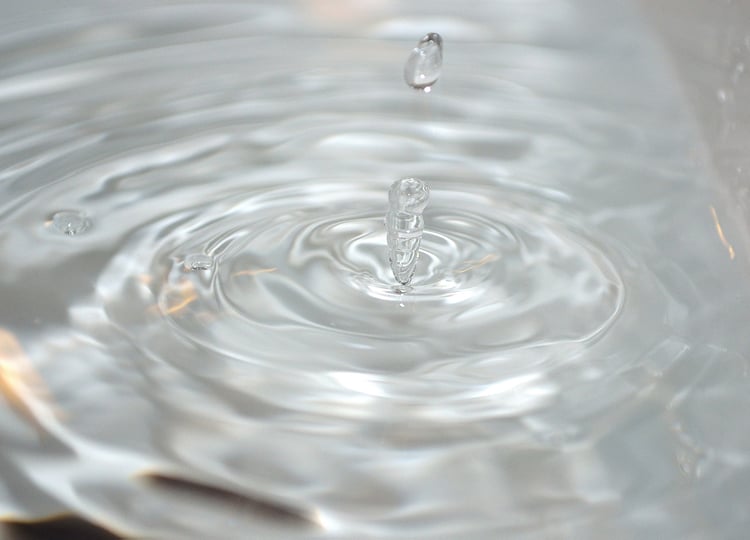
The deionisation of water is a slightly complex, two-stage scientific process whose aim is the removal of all dissolved salts from the water. This process is used widely as one of the main processes of water purification. It involves passing the water through chambers that have been set up to trigger a chemical reaction that attracts the dissolved minerals (in the form of anions) out of the water. This article provides detailed information about the process of deionisation and the two parts of the process worth noting. More information can be found in our free Guide To Industrial Deionisation Systems, which can be accessed by following this link.
Why Do We Deionise Process Water?
One of the reasons for which water is deionised is that water containing ions are not recommended for many chemical processes, because the ions in the water can interfere with the reagents used in the application. For many other applications that use water as a rinse or an ingredient, these electrically charged ions are considered impurities and must be removed from the water.
Deionisation Is Based On Hydrogen Exchange, But How Does It Work In Practice?
There Are 2 Phases To The Process:
Phase 1:
Firstly, the water is passed through an ion-exchange material. This passage removes calcium and magnesium ions from the water, as well as any other positive metallic ions that are in the water. They are attracted to and affix themselves to the ion-exchange material, which is normally a resin membrane.
At the same time, the ion-exchange material releases its hydrogen ions on a chemically equivalent basis, maintaining the chemical balance of the water. Each sodium ion (Na+) that affixes itself to the exchange material causes the release of one hydrogen ion; a calcium ion (Ca++) displaces two hydrogen ions from the exchanger; a ferric ion (Fe+++) displaces three hydrogen ions and so on. This exchange of other ions for hydrogen ions on an equivalent basis is a chemical necessity that permits the exchange material to maintain a balance of chemical charges.
After this the water will have lost all its organic cations (or positively charged ions) and has had them replaced by hydrogen ions (which are also positively charged). The water is now acidic as a result of a superabundance of positively charged hydrogen ions. At this point, the water now contains only hydrogen ions, which are the cations and the anions originally present in the raw water, unaffected by the ion-exchange material. It is still unfit for use in any industrial process. The exit of the acidic water from this material exchange chamber marks the end of the first stage of the process of deionisation.
Phase 2:
The partially treated water then flows through another unit, the anion material exchange. Here, the negative ions in the water (also known as anions) unaffected in the first ion material exchange phase, are absorbed into the anion material exchange and replaced by hydroxyl anions from the membrane. What emerges from this second material exchange is ion-free water. How this happens is that the hydrogen ions (H+) released into the water in exchange for the positive ions absorbed by the iron material exchange, now combine with the newly released hydroxyl anions (OH-) perfectly to form water.
The positive hydrogen ions are naturally strongly attracted to the hydroxyl ions and the reaction produces water (H2O) which has no ionic charge or signature. The water that emerges from the second stage of the deionisation process is referred to as mineral free water because all cation and anion impurities have been removed from it in exchange for hydrogen and hydroxyl ions, that then get together to form more water.
Deionisation Equipment
Equipment that is used in this deionisation process are varied and of different types, brands and designs, but most notable are the single bed and double bed exchangers. The double bed exchanger has the cation and anion material exchangers on different beds and working separately and independent of each other, while the single bed exchanger houses both the cation and anion exchangers mixed in a single tank.
How Deionised Water Is used In Industry
Deionised water is very pure, purer than distilled water, and this purity is desirable for a range of commercial uses. It is used mostly for laboratory and industrial applications but can also be used for processes where normal or distilled water might negatively affect mechanical or biological functions because of their low purity level.
Deionised water is used extensively in cooling systems: Because of its low conductivity, deionised water is a good cooling agent for equipment such as high power lasers, and CNC machines. It is also used in medical laboratory tests. In such settings, getting an accurate result is crucial. Using normal water has the ability to skew the laboratory test results significantly. Also, industrial machinery that is subjected to heavy use must be cleaned regularly to clear grime and dirt. Regular mains water, however, may cause parts of the machinery to corrode too quickly, depending on the ionic content of the water. Therefore, deionised water is best suited for such operations, as it does not contain any ions that may engender or support corrosion.
Find Out More
Speak to one of our technical advisers about how deionisation can benefit your business, saving money and time on your water purification process. Call us today on 01993 892211, or send us a message through our online contact form.










 We are a specialist independent company involved in water purification and water treatment technologies
We are a specialist independent company involved in water purification and water treatment technologies


